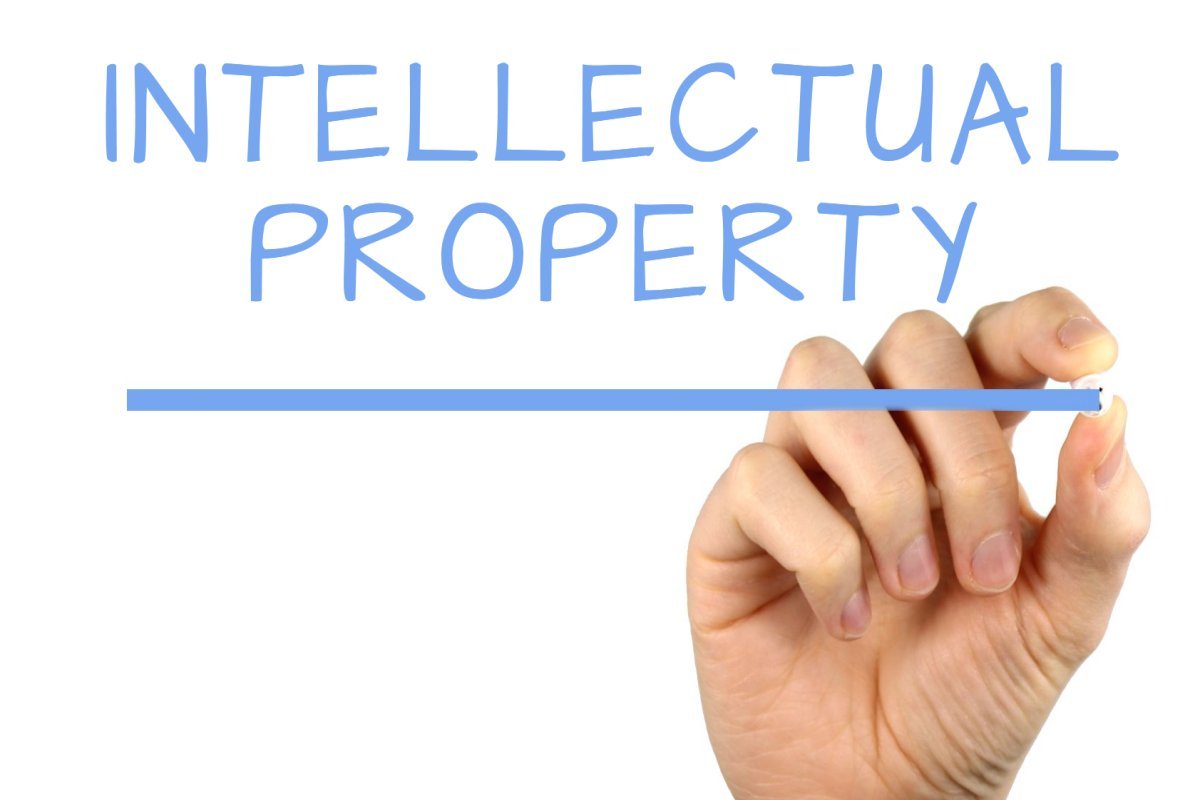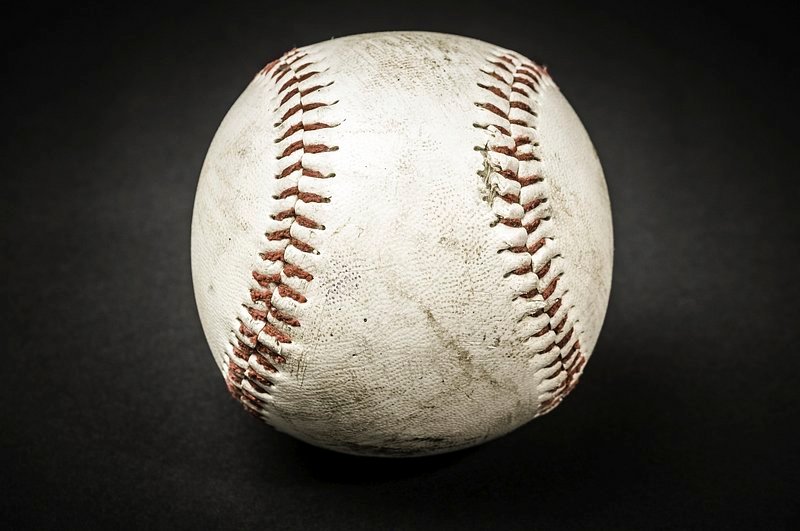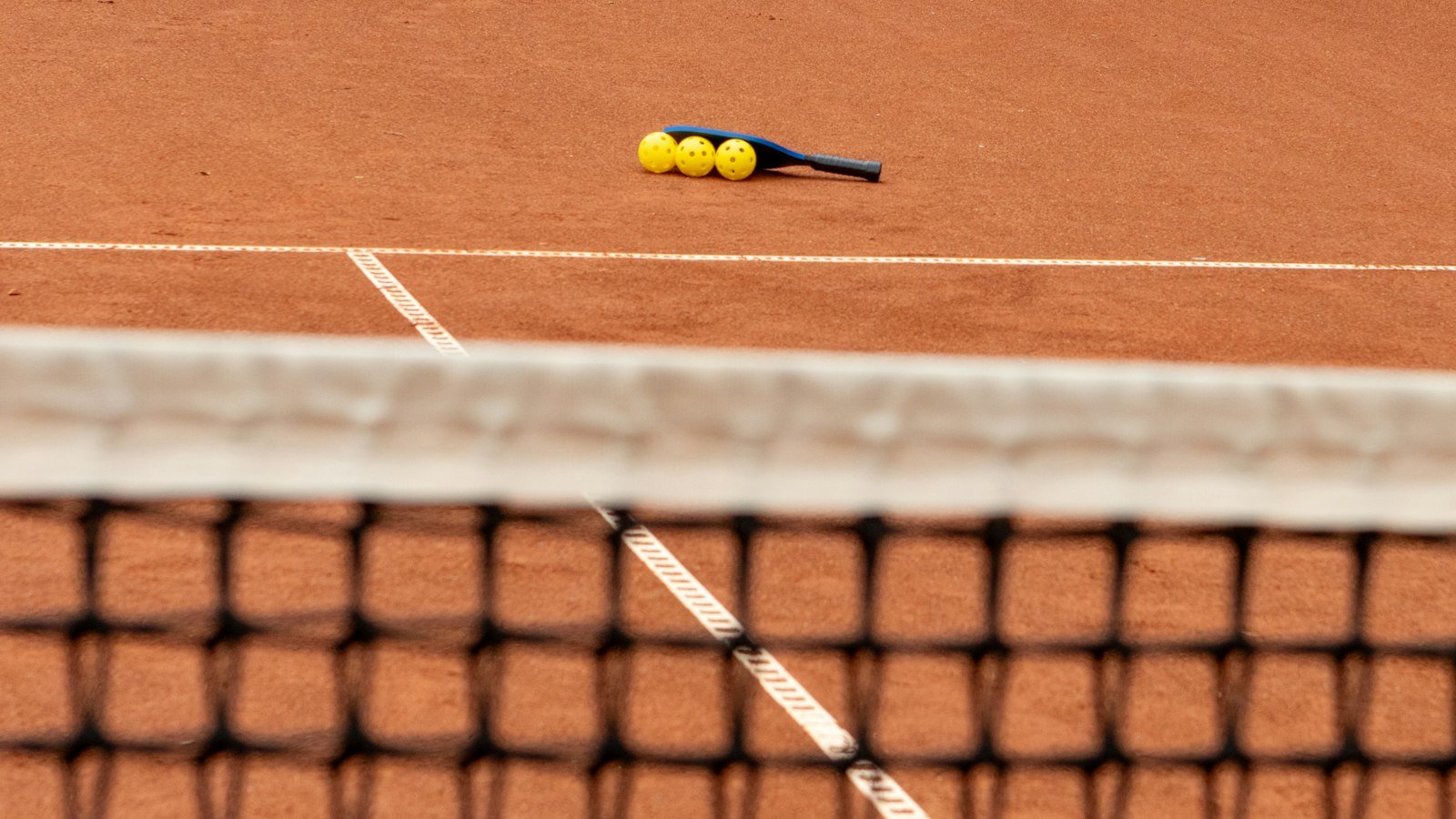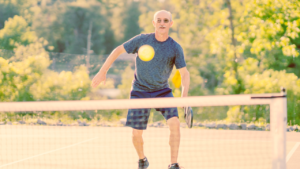Pickleball, a sport that combines elements of tennis, badminton, and ping pong, has taken the world by storm over the past few years. Its addictive nature and inclusive appeal have captivated players of all ages and skill levels. But amidst the frenzy surrounding this fast-paced game, a quieter battle is being fought—one that revolves around the protection of intellectual property. Yes, even in the world of pickleball, patents and trademarks play a crucial role in safeguarding the innovations and identities that shape this beloved sport. In this article, we will delve into the intricate world of intellectual property in pickleball, exploring how patents and trademarks have become integral to the game’s growth, development, and legal landscape.
Table of Contents
- Understanding Intellectual Property Rights in Pickleball
- The Significance of Patents and Trademarks in the Pickleball Industry
- Protecting Your Inventions: How to Obtain Patents in Pickleball
- Establishing a Unique Brand Identity: Trademark Strategies for Pickleball Businesses
- Tips for Safeguarding Intellectual Property: Best Practices in the Pickleball Community
- Q&A
- Closing Remarks

Understanding Intellectual Property Rights in Pickleball
When it comes to the exciting world of pickleball, there is more than meets the eye. Apart from the fast-paced action and strategic gameplay, intellectual property rights play a crucial role in shaping the sport. Intellectual property rights, often abbreviated as IP rights, refer to the legal rights that protect creations of the human mind. In pickleball, these rights can encompass a range of aspects, including innovations, designs, and even branding.
One of the most common forms of intellectual property rights in pickleball is the patent. Patents grant inventors exclusive rights to their inventions, preventing others from making, using, or selling the same invention without permission. In the pickleball world, patents can apply to groundbreaking paddle designs, specialized shoes, or unique equipment accessories that enhance the game’s overall experience.
Another aspect of intellectual property rights in the pickleball realm revolves around copyright protection. Copyright protects original works of authorship such as books, music, and artistic creations. In the context of pickleball, this may include written materials such as rulebooks, instructional videos, or even the composition of a catchy jingle for tournament advertisements.
Lastly, trademark rights also play a significant role in pickleball. Trademarks are symbols, names, or logos that distinguish the source of goods or services. In the pickleball community, trademarks could be seen on clothing lines, merchandise, or event banners, helping players and fans identify and connect with their favorite brands and organizations.
not only sheds light on the legal aspects of the sport but also emphasizes the importance of innovation, creativity, and fair competition within the community. Respecting these rights ensures a thriving pickleball culture where players and enthusiasts can continue to enjoy the game while supporting the inventors, creators, and brands that make the sport what it is today.

The Significance of Patents and Trademarks in the Pickleball Industry
Patents and trademarks play a vital role in the fast-growing pickleball industry, ensuring innovation, protection, and brand recognition. Let’s explore the significance of these legal frameworks and their impact on the industry:
- Elevating Innovations: Patents provide inventors and manufacturers with exclusive rights to their novel technologies and designs. This encourages continuous innovation in the pickleball industry, driving the development of new equipment, court accessories, and game variations that enhance player experience and enjoyment.
- Guarding Intellectual Property: Trademarks, represented by distinctive logos, names, or symbols, safeguard the identity of brands within the pickleball industry. They ensure that consumers can easily recognize and distinguish products from different manufacturers. By registering a trademark, companies can prevent unauthorized usage and protect their reputation, fostering healthy competition in the market.
- Promoting Consumer Confidence: Patents and trademarks establish trust between businesses and consumers. When a customer sees a patented product or a trademarked logo, they can have confidence in its quality, safety, and performance. These legal protections incentivize companies to maintain high standards and consistently deliver value, assuring players of a reliable and fulfilling pickleball experience.
Within the pickleball industry, patents and trademarks serve as the pillars upon which innovation, brand recognition, and consumer trust are built. By nurturing inventiveness, protecting intellectual property, and fostering confidence, these legal frameworks contribute to the sustainable growth and success of the industry as a whole.

Protecting Your Inventions: How to Obtain Patents in Pickleball
Turning your innovative ideas into tangible patents can be a game-changer in the world of pickleball. By securing exclusive rights to your inventions, you can establish yourself as a pioneer in this rapidly growing sport. Here, we will explore the essential steps needed to navigate the patenting process in pickleball, ensuring your ideas remain protected and giving you the opportunity to take your innovations to the next level.
Understanding the Basics
Before diving into the intricacies of obtaining patents, it is crucial to comprehend the basics of intellectual property rights in pickleball. A patent grants you the exclusive rights to make, use, and sell your invention for a limited period of time. In the context of pickleball, this could include groundbreaking paddle designs, unique court accessories, or refined game rules.
The Patent Application Journey
Obtaining a patent is not a straightforward process, but with the right knowledge and perseverance, your inventions can gain the protection they deserve. Let’s embark on the patent application journey:
1. Research: Before diving into the application process, conduct thorough research to ensure your invention is new and non-obvious, thereby meeting the patentability criteria.
2. Documentation: Document every detail of your invention meticulously, including its function, design specifications, and unique features. Visual aids, such as drawings or prototypes, can strengthen your application.
3. Seek Professional Guidance: It is highly recommended to consult a patent attorney or agent experienced in pickleball patents. They will assist you in drafting a well-prepared application that meets all legal requirements.
4. File the Application: Once your application is prepared, submit it to the relevant patent office along with the required fees. The patent office will conduct a thorough examination, evaluating the patentability of your invention.
5. Patent Pending: After submitting your application, you will receive a patent pending status, providing a degree of protection while your application undergoes review.
6. Review and Approval: During the examination process, your application will be scrutinized for novelty and non-obviousness. If approved, you will be granted a patent, safeguarding your invention for the designated period of time.
By safeguarding your pickleball inventions through patents, you can unleash your creative potential and contribute to the evolution of this dynamic sport. Take the first step today and pave the way for a future filled with innovation and protection.
Establishing a Unique Brand Identity: Trademark Strategies for Pickleball Businesses
Trademark Strategies for Pickleball Businesses
Creating a strong and unique brand identity is essential for any business, and pickleball businesses are no exception. In order to stand out in a competitive market, it is crucial to implement effective trademark strategies that will protect and enhance your brand.
One strategy is to develop a distinctive brand name and logo that accurately represents your pickleball business. This could involve brainstorming creative and catchy names that are memorable and relevant to the sport. It is important to conduct a thorough search to ensure that your chosen brand name and logo are not already registered trademarks in the pickleball industry.
Once you have established your brand name and logo, it is imperative to register them as trademarks to safeguard your intellectual property rights. This provides legal protection against others using or imitating your brand identity, giving you exclusive rights to the use of your trademark in relation to your business. By registering your trademarks, you can establish a strong foundation for your brand and build customer recognition and loyalty.
Additionally, it is vital to regularly monitor the marketplace for any potential trademark infringements. This can be done by conducting periodic searches to ensure that no one is using a similar brand name or logo that could cause confusion among consumers. Taking prompt action against any infringements can help protect your brand’s reputation and maintain a strong, unique identity.
In conclusion, to establish a unique brand identity for your pickleball business, implementing effective trademark strategies is essential. By developing distinctive brand names and logos, registering them as trademarks, and monitoring for potential infringements, you can safeguard your intellectual property rights, build customer trust, and differentiate your business in the pickleball industry.
Tips for Safeguarding Intellectual Property: Best Practices in the Pickleball Community
Intellectual property protection is crucial in any community, and the pickleball community is no exception. Here are some invaluable tips for safeguarding your creative work, inventions, and branding:
- Register your trademarks: It is essential to protect your brand identity in the pickleball community. Make sure to register your trademarks with the relevant authorities to secure exclusive rights to your logos, names, and slogans.
- Patent your unique inventions: If you’ve come up with innovative equipment or game modifications, consider filing for patents. It grants you legal rights and prevents others from using, selling, or profiting from your creations.
- Use non-disclosure agreements (NDAs): When collaborating with others or discussing proprietary information, always have NDAs in place. This ensures that sensitive ideas, designs, and strategies remain confidential and protected from misappropriation.
- Copyright your creative content: Whether it’s articles, videos, or design elements, copyright your original work. It safeguards your rights against unauthorized use, reproduction, and distribution.
- Beware of online infringement: Monitor the internet and social media platforms for any unauthorized use of your intellectual property. Promptly report and take necessary action against infringers to protect your rights effectively.
By implementing these best practices, the pickleball community can promote creativity, reward innovation, and ensure a fair and protected environment for all players and businesses.
Q&A
What is the purpose of having patents and trademarks in pickleball?
Patents and trademarks protect the intellectual property rights of individuals or companies in the pickleball industry. Patents prevent others from making, using, or selling a patented invention, while trademarks distinguish and protect certain brands and logos.
How can patents benefit pickleball inventors?
Patents provide inventors with exclusive rights to their creations, allowing them to profit from their innovations and prevent others from copying or profiting from their ideas. This incentivizes inventors to continue pushing the boundaries of pickleball technology.
What kinds of pickleball inventions can be patented?
Various pickleball inventions may be eligible for patent protection, such as innovative paddle designs, court equipment, ball composition, game accessories, or unique training devices. As long as the invention is new, useful, and non-obvious, it may qualify for a patent.
How long does patent protection last in pickleball?
Utility patents typically last for about 20 years from the date of filing, while design patents provide protection for 15 years. Once a patent expires, the invention enters the public domain, making it available for others to use or improve upon.
What are the benefits of obtaining a trademark in the pickleball industry?
A trademark grants the owner exclusive rights to use a particular logo, brand name, or slogan. By registering a trademark for their business or product, pickleball companies can establish brand recognition, prevent confusion among consumers, and deter others from using similar marks.
Are there any limitations on trademark protection in pickleball?
Trademark protection is limited to the specific goods or services associated with the mark. This means that if a trademark is registered for pickleball equipment, it may not prevent someone from using a similar mark for unrelated goods like food or clothing.
Can a patent and a trademark be obtained for the same pickleball invention?
Absolutely! It’s common for pickleball inventors and companies to protect their intellectual property by obtaining both a patent and a trademark. Patents safeguard the technical aspects of the invention, while trademarks protect the branding and marketing associated with it.
What steps should pickleball inventors take to protect their intellectual property?
To protect their intellectual property in pickleball, inventors should consider consulting with an intellectual property attorney, conducting a thorough patent search, filing a patent application if eligible, and registering a trademark for their brand name or logo. These steps help ensure legal protection and discourage infringement.
Closing Remarks
As we embark on the pickleball court of intellectual property, we have unveiled the intricate world of patents and trademarks that cocoon this beloved sport. From the swift paddle strokes to the resounding thwack of the ball, pickleball has captured the hearts of enthusiasts worldwide. But behind the scenes lies a realm where creative minds, legal intricacies, and innovation meld together to protect the very essence of the game.
Throughout our journey, we explored the depths of patent protection, unfurling a tapestry of inventions that elevate the game’s intensity to breathtaking levels. From paddle designs engineered for precision to cutting-edge ball technology meticulously crafted for optimal playability, patents stand tall as the guardians of innovation in pickleball. These invaluable legal shields ensure that each stroke on the court, each strategy honed, is a testament to ingenuity protected.
Moreover, trademarks instill soul and identity into pickleball’s vibrant tapestry. Within the lines of the court, these distinctive symbols weave tales of dedication, quality, and reputations built over time. They serve as a beacon, effortlessly guiding players and enthusiasts towards authenticity, while warding off counterfeit imitations that seek to sully the game’s integrity. As players grip their paddles, wearing the insignia of trusted brands, they not only embrace the legacy of the sport but also become ambassadors of its remarkable heritage.
Yet, beneath the surface, the realm of intellectual property in pickleball remains captivatingly nuanced. As the game continues to evolve, so do the legal frameworks guarding its integrity. The bolstering of innovative protections and the ever-expanding armory of trademarks signify a steadfast commitment towards nurturing a playing field that thrives on fairness, authenticity, and creative brilliance.
So, as we part ways with this exploration, let’s celebrate the unsung heroes hidden in legal briefings, the guardians of originality who champion the brilliance behind each exhilarating pickleball match. The ingenuity deserves recognition, safeguarding the time-honored traditions and pushing the boundaries of innovation that propel pickleball into undiscovered territories.
In our hands, innovation, tradition, and authenticity converge to foster the magic of pickleball. Let us continue to honor the creators and innovators, the artisans who pave the way for unforgettable games and unprecedented joy. And remember, as we fiercely compete, respecting the boundaries set by intellectual property empowers pickleball’s enduring legacy, inviting endless possibilities in the realm of this enchanting sport.
As an affiliate, my content may feature links to products I personally use and recommend. By taking action, like subscribing or making a purchase, you’ll be supporting my work and fueling my taco cravings at the same time. Win-win, right?
Want to read more? Check out our Affiliate Disclosure page.




